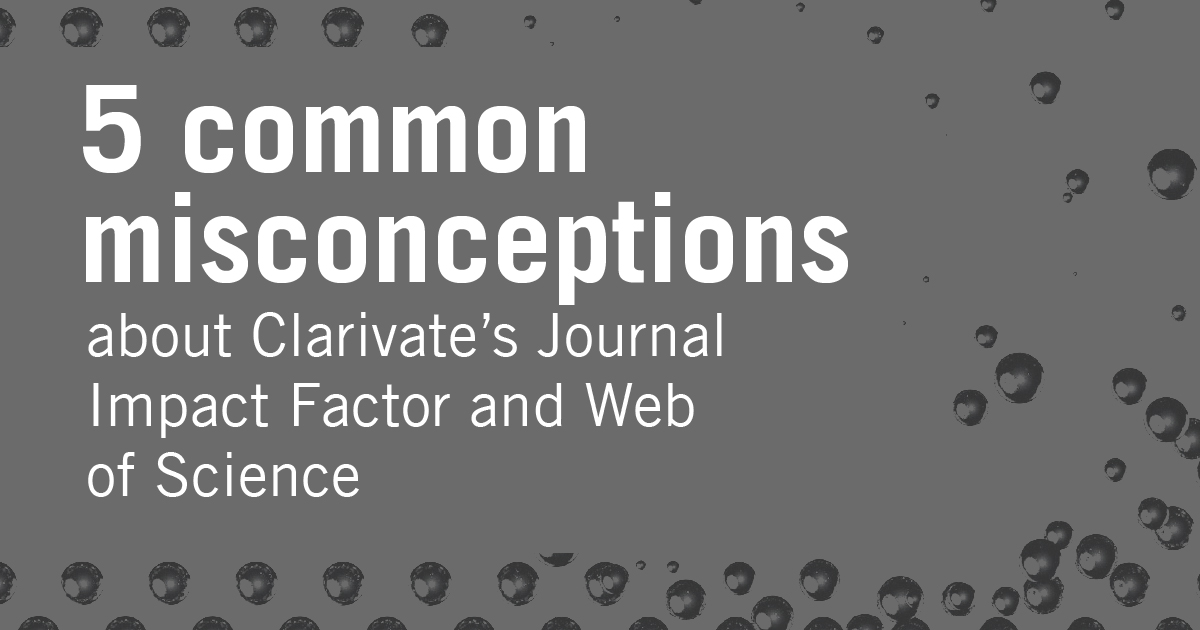
by Aaron Tay, Lead, Data Services
It is the time of the year again, when Clarivate releases a new batch of Journal Impact Factor (See our coverage - "Journal Impact Factor for 2021 is out"). While many of you have heard of the Journal Impact Factor (JIF), there are many misconceptions and confusions around it. Here are five misconceptions that I regularly come across.
Misconception 1: Web of Science is where you should start to look for Journal Impact Factor (JIF)
In fact, if you are looking to browse for Journal Impact Factors (JIF), Journal Citation Reports (JCR) is the best place to start searching or browsing by journal title rather than start at Web of Science which is for article searching.
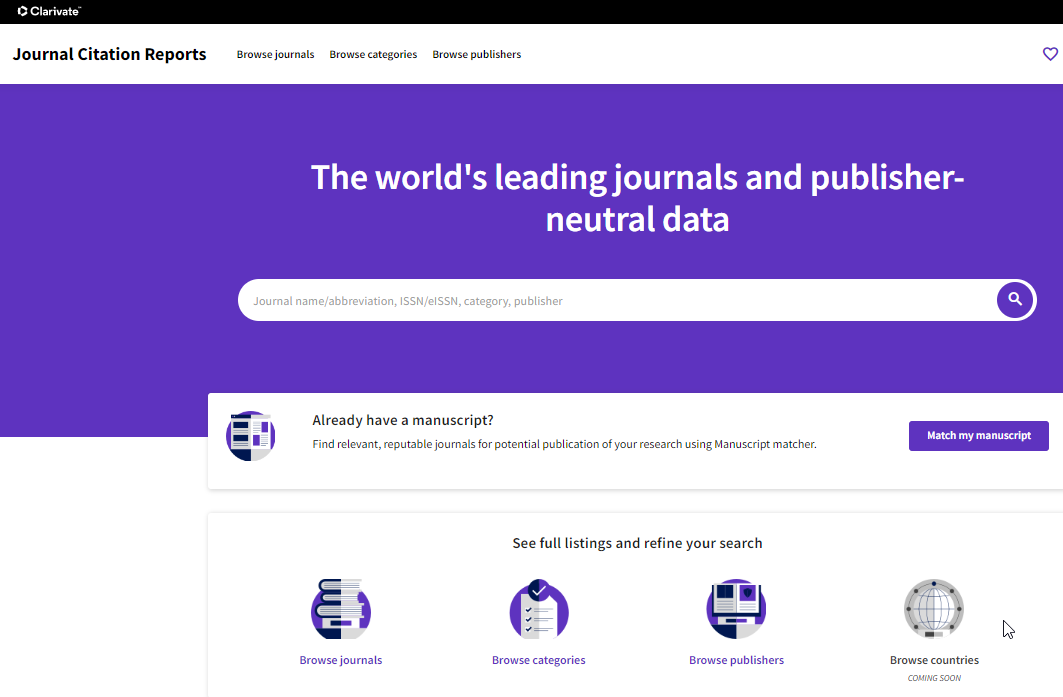
Explanation:
Most researchers might be familiar with the Web of Science (or more properly the Web of Science Platform), where they use to search and find articles indexed in Web of Science, so it might be natural to look for JIF in Web of Science.
In fact, while you can search for articles and click on the “Journal” link in Web of Science records to see individual JIFs, if you want to browse for journals by categories or publishers, it is better to start off at the Journal Citation Reports (JCR).
You can get to JCR either directly via our SMU Libraries' A-Z Databases page or if you are already in the Web of Science platform, click on the “Products” link on the top right of the page.
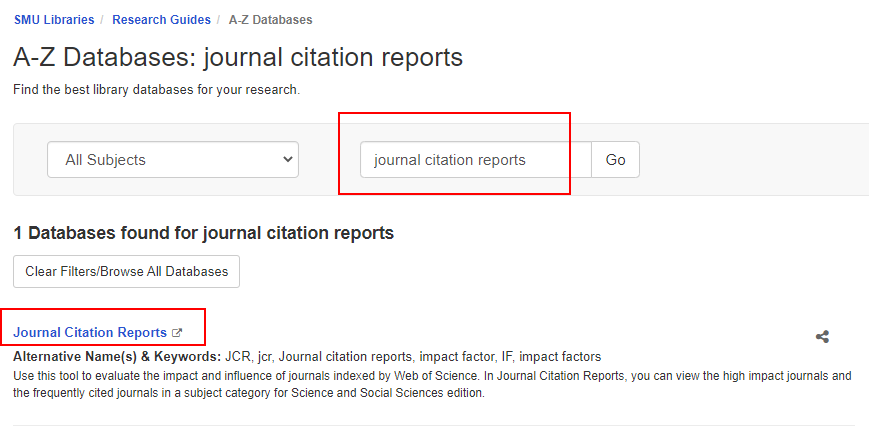
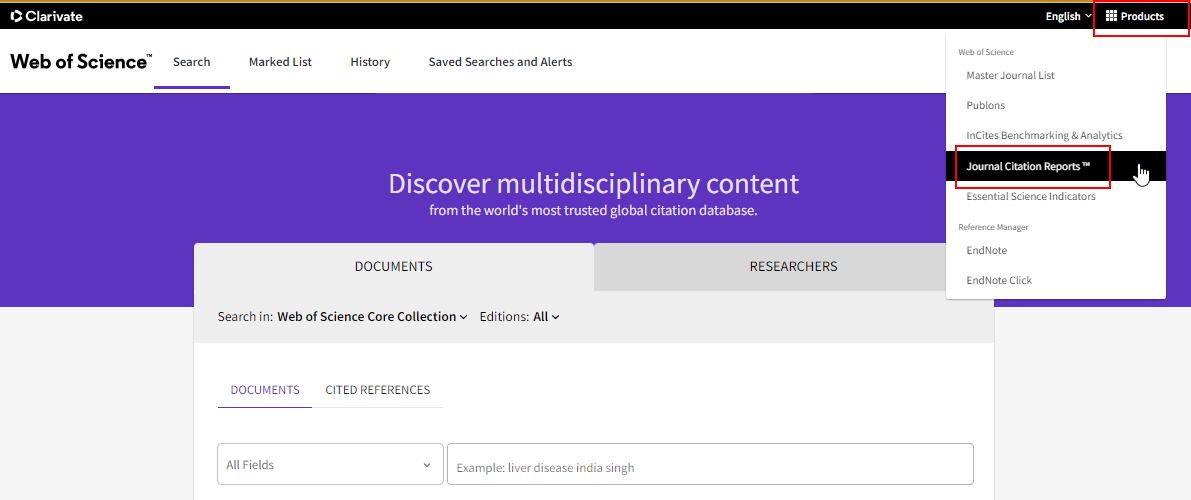
Misconception 2: Every journal listed in the Web of Science platform will have a Journal Impact Factor (JIF)
In fact, even though you may find a journal article in the Web of Science platform, it is not guaranteed that the journal will have a JIF.

Explanation:
Some journals that used to have JIF in prior years, may be “suppressed” which denies the journal from getting a JIF, when there is “evidence of excessive journal self-citation and/or citation stacking.”
Such journals, even when suppressed, will have articles that remain in Web of Science search results.
More importantly, only journals indexed in the following two collections – get a JIF:
- SCIE (Science Citation Index Expanded)
- SSCI (Social Science Citation Index)
In comparison, Web of Science is a platform from Clarivate which may include (depending on institution holdings)
- Web of Science Core Collection (SCIE, SSCI, Arts & Humanities Citation Index and Emerging Sources Citation Index, Book Citation Index and Conference Proceedings Citation Index
- Other regional citation indexes, SciELO Citation Index , KCI-Korean Journal Database, Russian Citation Index, Chinese Citation Index
- Other subject databases and citation indexes (depending on institution holdings) e.g. Data Citation Index, Derwent Innovations Index, CAB Abstracts, Biological Abstracts, BIOSIS Previews, Zoological Record, and Current Contents Connect
None of the journals found in these collections/databases (except those in SCIE and SSCI) have a JIF.
Breaking News! - Clarivate has announced that from next year - 2023 Journal Citation Reports will start including Journal Impact Factors (JIF) for all journal titles in the Core Collection. This effectively means on top of existing journals from the SCIE (Science Citation Index Expanded) and SSCI (Social Science Citation Index) collections, additional journals from the Arts and Humanities Citation Index (AHCI) and the multidisciplinary Emerging Sources Citation Index (ESCI) will have JIFs starting in 2023.
But how do journals get included in the Web of Science Core Collection? Refer to Clarivate's Web of Science Core Collection editorial selection process.
Misconception 3: Every journal listed in the Journal Citation Reports (JCR) will have a Journal Impact Factor (JIF)
Okay so not every journal in Web of Science has JIF, but surely all journals listed in the Journal Citation Reports have one? In fact, not even every journal listed in the Journal Citation Reports (JCR) has a JIF!
Only journals indexed in the Science Citation Expanded Index (SCIE) and Social Science Citation Index (SSCI) have JIF (if not suppressed). Other journals listed in the Journal Citation Reports from other collections namely the Arts & Humanities Citation Index (AHCI) or Emerging Sources Citation Index (ESCI) in JCR will NOT have a JIF (nor do you get the 5-year JIF).
You do get a Journal Citation Index (JCI) score though. Further explanation on JDI will be covered in the latter part of this article.
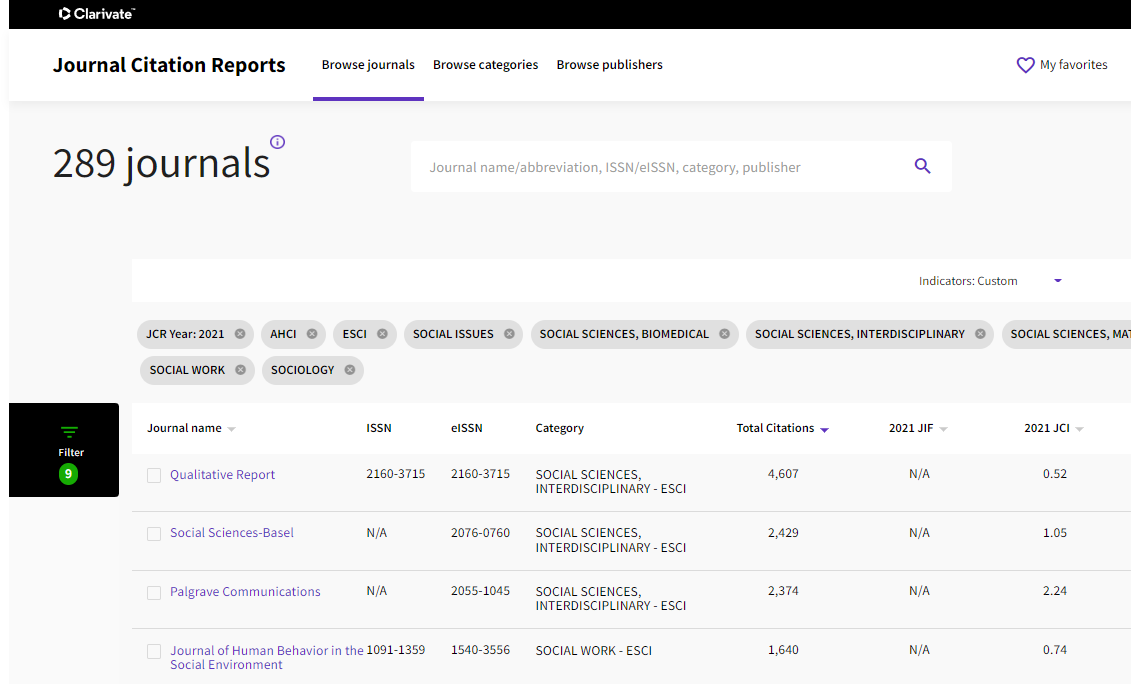
Explanation:
JCR lists journals included in the Web of Science Core Collection.
It includes the following:
- Science Citation Expanded Index (SCIE)
- Social Science Citation Index (SSCI)
- Arts & Humanities Citation Index (AHCI)
- Emerging Sources Citation Index (ESCI)
- Book Citation Index
- Conference Proceeding Citation Index
Clearly, not all of the items indexed in these collections are journal/journal articles. That said, citations from these items count to a journal’s JIF. For example, a cite from a book in a book citation index to a journal article, counts to that Journal’s JIF.
However, even being a journal indexed in Web of Science Core collection will not necessarily have a JIF.
In particular, journals indexed in Arts & Humanities Citation Index (AHCI) and Emerging Sources Citation Index (ESCI) while being in JCR, they do not have a JIF. Only journals indexed in 2 Core collections Science Citation Expanded Index (SCIE) and Social Science Citation Index (SSCI) have JIFs.
Breaking News! - Clarivate has announced that from next year - 2023 Journal Citation Reports will start including Journal Impact Factors (JIF) for all journal titles in the Core Collection. This effectively means on top of the journals in the two collections, Science Citation Expanded Index (SCIE) and Social Science Citation Index (SSCI) that already have JIFs, journals from the Arts and Humanities Citation Index (AHCI) and the multidisciplinary Emerging Sources Citation Index (ESCI) will be also given one starting in 2023.
Breaking News! (28th Feb 2024) - After issuing a JIF 2022 for journals in Arts and Humanities Citation Index (AHCI) in JCR 2023, Clarivate announced that they will no longer issue JIFs for journals in AHCI for JIF 2023 in JCR 2024
Why do journals even those in the “flagship” core collection - Arts & Humanities Citation Index (AHCI) not have a JIF? According to a Clarivate representative, “Arts and Humanities journals citations tend to be low and contains many non-scholarly materials. While technically possible to calculate JIF values, it is of limited use and can be potentially misleading.”
They instead have normalised Journal level metrics like Eigenfactor/article influence and the recently introduced JCI (Journal Citation Index).
What is JCI? This is a new journal-level metric introduced by Clarivate in 2021. It is essentially a normalised Journal level metric that considers Field/Discipline, Year of Publication and Publication type (article or review). It is calculated by the mean Category Normalised Citation Impact (CNCI) for all articles and reviews published in the most recent three years. For more details, refer to our Research Radar piece – “Clarivate Releases Journal Citation Reports (JCR) 2021 – Some notable changes”.
Misconception 4. Every institution will have the exact same results when searching with the same keywords when searching Web of Science Core Collection.
We have already seen that the Web of Science platform, may include results from other databases, but even when we restrict the search to only Web of Science Core collection, there are differences.
Explanation:
Different institutions might have different holdings for Web of Science Core collections, leading to different results even using the same keyword at the same time. This is unlike Scopus where the coverage is the same at all institutions.
This limitation is of importance when doing systematic reviews and you need to report the sources you searched, particularly if you follow reporting standards like Preferred Reporting Items for Systematic Reviews and Meta-Analyses (PRISMA)
For example, for the search to be reproducible you will need to state that you searched not only Science Citation Expanded Index (SCIE) but also the coverage.
The screenshot below shows you how to check coverage of each of the Core Collections that you are searching in.

Explanation:
Take the Singapore Management University, our coverage for SCIE is only from 1965 to 2021, when other institutions might have a longer coverage from 1900. Similarly, our coverage of Book Citation Index- Science is only from 2015-2018 after which we stopped subscription.
This is of importance when doing systematic reviews and you need to report the sources you searched.
To find what coverage we have, go to editions and look at the drop-down menu.

Misconception 5: When Checking JCR in the year 2022, the latest JIF available will be JIF 2022
The traditional Journal Impact Factor is designed to count citations made by one citing year to publications of a journal title published 2 years before that.
So, for example, JIF 2021 takes all the citations made by documents in 2021 to publications published in 2019 and 2020.

Note: While all citations from documents indexed in the Web of Science Core Collection count in the numerator, the denominator includes only “citable items” which are documents classified as articles, reviews and conference proceedings.
It is important to note that JIF is released annually. So, for JIF 2021, which uses all the citations made in 2021, you must wait until 2022 when 2021 is over. Moreover, Clarivate takes time to do the calculations and doesn’t immediately release the JIF. In fact, the latest JIFs are usually released in late June or early July.
Effectively this means that even in say May 2022, you will still not have the JIF for 2021 (only JIF for 2020 is available) until late June/July 2022!
This also means the JCR (Journal Citation Reports) for 2022 which is released in June/June 2022, will only have the JIF for 2021 and not 2022 because the year 2022 is not over yet.
Conclusion
Yes, understanding Journal Impact Factor can be confusing but feel free to consult your librarian if you need your doubts clarified.